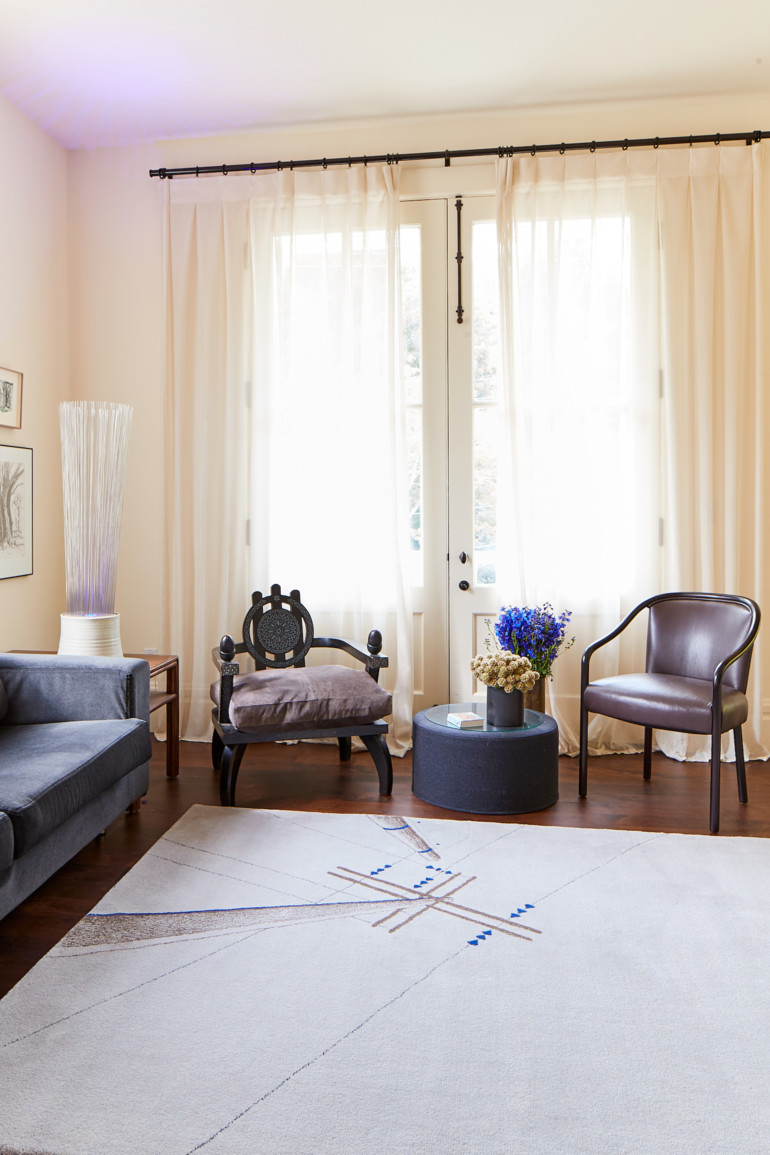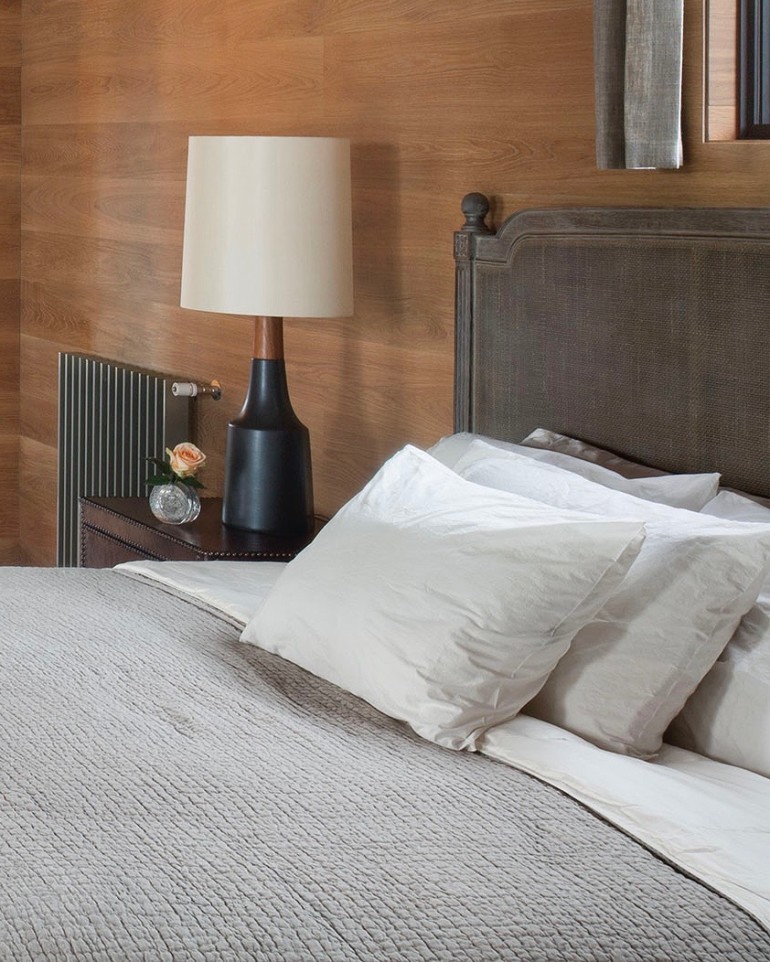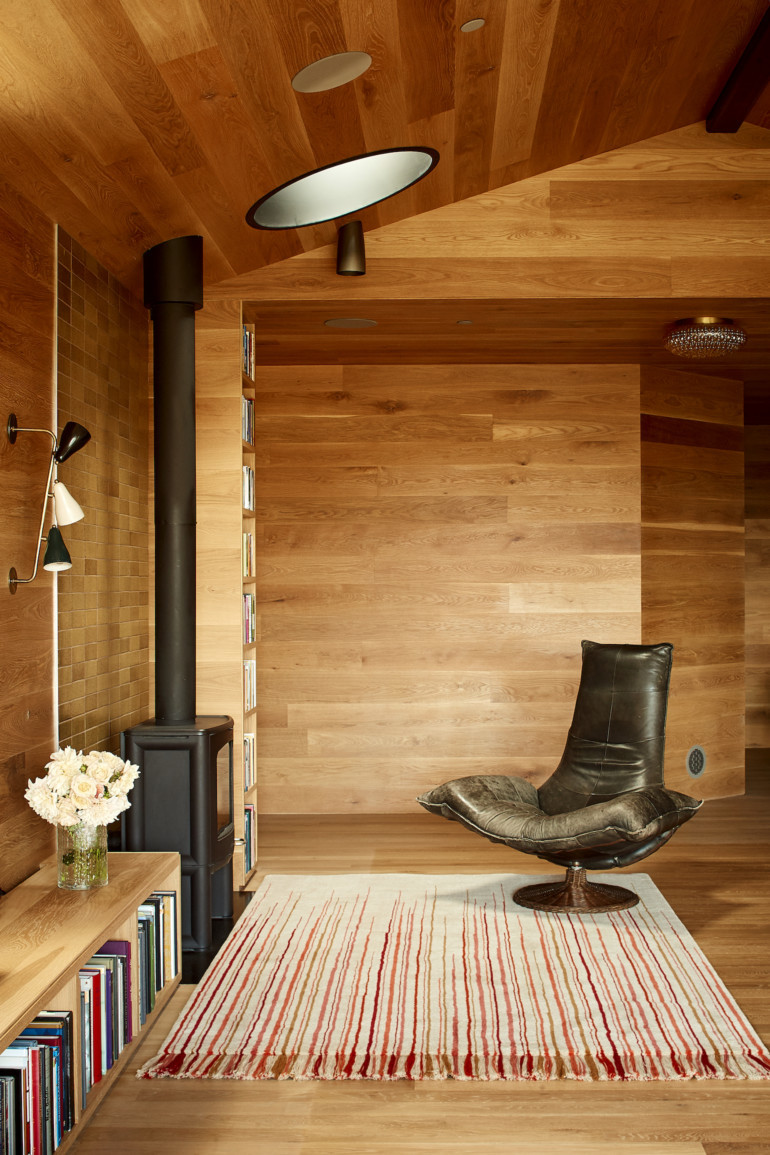Mill Valley, California-based architect Sherry Williamson, known for her high-end residential interior architecture, custom furniture and lighting, is an expert in healthy homes and LEED platinum requirements, and was one of the pioneers in the field before it gained the widespread visibility both in the industry as well as in consumer consciousness that it has today. We recently spoke to her about what “healthy home” means in practical terms and what steps you can take now to make your own home healthier. And, given the current spotlight on global health—and the fact that we’re all spending a whole lot more time in our homes— isn’t this something we should all be thinking about?
What does “healthy home” mean?
The term “healthy home” covers everything from the built environment to the architecture, to the loose furnishings, which includes furniture, drapery, carpeting and rugs. But then there are also the mechanical systems that can have a big impact on the quality of life in the space itself. The heat and cooling sources, those are all really integral parts to making the house healthy or not. One of the interesting things with more airtight, new-construction homes is that the air quality has become more important because people don’t have leaky windows that bring fresh air in.
What kind of clean air systems are people using?
I think the most important one people are using is called HRV or ERV, which is a way to supply filtered air into a really airtight home so that you have fresh air. But it’s not just opening the window, it’s actually clean air, so if you have a lot of pollen or smoke outside like we had from the fires here in California last year, then you would be taking the pollutants out as well as any other chemicals that might be present.

Air quality depends a lot on heating and cooling systems as well, so are windows a vital component of these systems?
Definitely. The type of glazing on a house’s windows is really important. There are so many different types of high-tech glazing and it depends on where you live and what exposure the windows are getting so that you are really capturing benefits where you can and avoiding heat gain. In many places, this is the bigger problem because people end up needing air conditioning. If you are putting in new windows it’s a really good opportunity to get the right glass recipe.
You mentioned furniture, it seems like this would be an area where designers and manufacturers are being more conscientious?
Let’s take a piece of upholstered furniture and break it down. It has a wood frame typically, or maybe a metal frame, that holds the piece of furniture together. That is going to be built up with some type of strapping or metal webbing. Then there is foam put on top and another layer of batting that smooths over the foam. The fabric is then put on at the end. With every one of those layers, there are choices to be made. Fortunately, more manufacturers are tuned into consumers wanting to have cleaner furniture so there are more opportunities to get cleaner pieces than there used to be without going completely custom. However, one area that we need to pay particular attention to is the foam. There are all different types and grades of foam and it’s nice to have something that is not off-gassing and doesn’t fire-retardant chemicals in it. Fortunately, the fire-retardant chemical mandate was removed not very long ago by California, mostly with the efforts of a woman in Berkeley named Arlene Blum who’s a biophysical chemist and a real champion of the cause. Ironically, it was California that led the way in requiring the fire-retardant chemicals a few decades ago.

Fabric, the part of the furniture that our skin is coming into contact with, is probably the most important part, right?
Yes, the fabric itself can have a really big impact. Many fabrics today have stain-resistant coatings on them, which is very tempting for people because it’s nice to have furniture that will stay clean, but those chemicals are very toxic. That said, they are touted heavily by fabric industries and chemical industries. Those same chemicals are on carpeting as well and they are very hard to track down and find out about in many cases. They are still advertised as being a huge bonus for customers.
What about kitchens?
Appliances are a really big challenge because they are very, very difficult to get information on. We had green consultants on a number of projects, people who have a lot of experience, and it’s even difficult for them to get information. We have looked into refrigeration products for a lot of projects and after digging for information and working with the technical departments of the different manufacturing companies, we found that one of them actually had BPA in the bins that store food. That was about five years ago, I don’t know if they have changed their recipe for their drawers or not. The ongoing challenge is that in the U.S. pretty much everything is allowed unless it is proven toxic. Even if something is proven toxic — like now, almost everyone is familiar with BPA and knowing that it is toxic — if they tweak one part of a molecule, then it is not on the toxic list. It is still in the same family of bad chemicals — probably has all of the same bad side effects because these are very complex molecular structures — it is no longer on the list. That said, awareness has grown exponentially in the last 10 years. It has put a lot of pressure on a lot of manufacturers to address those issues and offer products that don’t have those things in them.
Are solar panels and rain water collection systems still a big priority for people?
Solar continues to get better and better and now people’s goals are not just to have solar panels, but to have solar panels that feed back into the grid, but also to feed into their own storage on their property. This is particularly useful when we have electric shortages and outages, which we all know has been a big problem. In terms of water storage, we did an enormous underground rainwater holding tank and it is a lot of work to maintain the system. Even if you have a small tank underground you have to find a way to pump water back out and figure out how to make sure the water stays clean. You have to consider if there is water runoff from your neighbor’s yard that has pesticides and if you want that water on your vegetable garden. There are a lot of issues to take into consideration. But those are certainly becoming more and more popular.
What are some steps that people can take right now to update their homes and make them healthier?
The easiest items to update are loose furnishings and bedding products because they have a limited lifespan anyway. You spend a lot of time in your bed and on your furniture so that is a really great place to make sure you have clean materials. On the furniture, like your sofa, find out what is in and on it. If you have an older piece of furniture it may very well be when manufactures were using fire retardants and it would be great to replace that. With bedding, it is pretty easy to go online and find organic bedding and mattresses. Personally, I would avoid memory foam. In terms of carpeting, most rugs are wool and cotton and those are probably OK, but if you have wall-to-wall carpeting and you are thinking of replacing it, really try and go to a supplier who has wool carpeting without the stain proof finishing on it so that you don’t introduce new toxins into the home.

What about wall paints?
If your walls already have paint on them, the paint has probably already off-gassed so don’t worry about it. But if you want to repaint, pick a paint that has as close to zero VOCs as you can because that is completely doable now. And if you are living in your house, you don’t want to paint and sleep there that night unless you use that type of paint.
Do you have any favorite online shops you can recommend for buying healthier home products?
Some of my favorites are Berkeley-based European Sleepworks for certified Oekotex mattresses and pillows. For organic sheets, organic bedding and organic pjs try Coyuchi, which is based in Point Reyes. And for clean upholstered furniture, specifically their ParaPure fill, Cisco Home is a go-to.

Creating a healthy home could potentially be a very big undertaking for people, especially when they start asking questions. Any advice?
Try not to be discouraged when you don’t get answers. The more people who ask the questions, the more manufactures and vendors are going to realize it is important to customers and that they need to do something about it. It’s so important to be putting those questions out there because at some point there will be a critical mass and manufacturers are going to know it’s going to make a difference if they respond and change their business.
Did you try any of our tips for a healthier home? Let us know!
For more from Better:
How Toxic is Your House? 7 Steps to a Safe, Healthy Home
How to Choose the Perfect Paint Colors for Your Home
Everything You Need to Know to Hire an Architect for Your Home Construction or Remodeling Project
This article originally appeared on Better.net.

